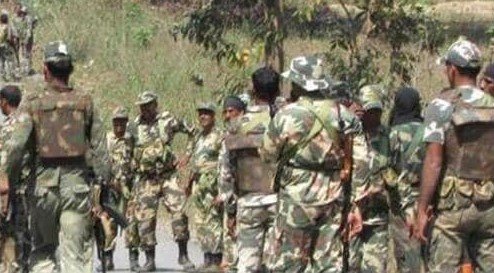India’s battle against left-wing extremism (LWE) in the red corridors has reached a critical moment. Security forces have been fighting grim battles, making deep inroads into the Maoist heartland. The strongholds of the outlawed group have been falling one by one. The state-sponsored Operation Kagar, seen as a sequel to the 2009 counter-insurgency initiative Operation Green Hunt, has made significant headway.
In the past two years, encounters between security forces and Naxalites have resulted in substantial casualties among the insurgents. In 2024, over 159 Maoists were killed in various operations, and in 2025, the number has already exceeded 113, with notable encounters in Chhattisgarh’s Bastar region. These figures underscore the intensified efforts by security forces to weaken the insurgency.
The total number of Maoist surrenders in the last two years has been remarkable. In 2024 alone, 787 surrenders were recorded, largely due to the efforts of the Central Reserve Police Force (CRPF) and its specialized units. In the first quarter of 2025, the number of surrenders has already exceeded 280, bringing the total to over 1,000 in two years.
These numbers reflect the growing impact of counter-insurgency measures and developmental initiatives in affected regions. However, civilians, particularly innocent tribal communities, have often been caught in the crossfire and paid a heavy price. Fighting with its back to the wall, the CPI (Maoist) leadership has offered peace talks, calling for a ceasefire.
On April 5, 2025, 86 Naxalites, including senior ranks and militia members, surrendered before the police in Bhadradri Kothagudem district of Telangana. This is one of the highest numbers in Maoist history, with most of them hailing from the tribal heartland of Bijapur in Bastar. Similarly, 50 Naxalites surrendered last week in Bijapur, Chhattisgarh.
The insurgency, which began in 1967 with the Naxalbari uprising, reached its peak in the late 2000s, affecting nearly 180 districts. The Modi government, as announced by Home Minister Amit Shah, is firm on addressing the insurgency by 2026. The government has employed a multi-pronged strategy, blending counter-insurgency operations with developmental initiatives in tribal regions.
Shah has declared that the number of LWE-affected districts has now come down to only six. States like Karnataka have achieved Naxalite-free status, while Telangana and Andhra Pradesh are on the brink of joining their ranks. Maharashtra and Odisha are making strides in reducing Maoist influence, although Chhattisgarh and Jharkhand remain challenging territories.
A key factor in the success of this campaign has been the government’s focus on improving infrastructure in remote, tribal regions. Enhanced telecommunications, road networks, and educational facilities have bridged the gap between the state and historically marginalized communities. Previously susceptible to Maoist propaganda, these communities are now increasingly receptive to the state’s initiatives, paving the way for integration and development.
Experts caution, however, that addressing the socio-economic roots of the insurgency remains critical. Decades of deprivation and neglect have fueled the movement, and sustainable solutions must focus on uplifting vulnerable populations. The insurgency owed much to an ideology advocating power through the gun.
However, the legitimacy of power stems from the consent of the governed, not coercion or force. While violent movements might create fear or disruption temporarily, they struggle to achieve lasting authority because they lack foundational support from citizens.
History has shown that movements relying on force often falter in the face of democratic resilience. Ideas, dialogue, and inclusivity are far more powerful tools in creating meaningful and lasting change. After all, in a democracy, it’s the ballot, not the bullet – that truly matters.


